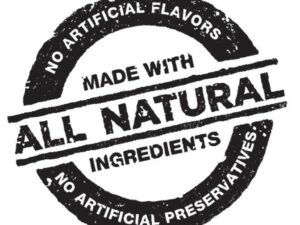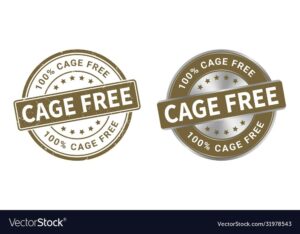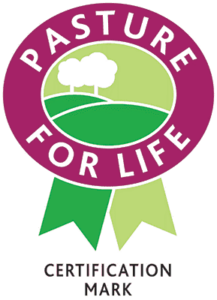We may find many different food labels that contain details on how food has been processed or grown. And how significant are buying natural and organic foods when it comes to healthy eating. Some terms are helpful and others are misleading. So, let’s have a look at few of these terms so as to see what they actually mean.
CERTIFIED LABELS
- NATURAL FOOD LABLES
- ORGANIC FOOD LABLES
- CAGE-FREE FOOD LABLES
- GRASS-FED FOOD LABLES
- FREE RANGE FOOD LABLES
- PASTURE-RAISED FOOD LABLES
- LOCALLY GROWN FOOD LABLES
ORGANIC FOOD LABLES
- This label indicates that a product has been grown by a sustainable farming process.
- Foods may only be marked as ‘organic’ if at least 95% of their agricultural ingredients are organic.
- In non-organic foods, any ingredients which meet organic standards can be listed as ‘organic’.
- USDA’s National Organic Program regulates labeling requirements for Organic claims on food products.
- Products that contain at least 70 % organic ingredients and are produced without synthetic methods are labeled “made with organic ingredients”.
- Organic foods must be produced without the use of most conventional pesticides, sewage sludge, synthetic fertilizers, irradiation, or genetic engineering.
- These foods are also produced using methods that promote the conservation of our natural resources.
- Organic meat, poultry, eggs and dairy products come from animals that are raised without the use of antibiotics or growth hormones.
- Organic crops must be grown in safe soil, have no modifications and must remain separate from conventionally grown crops.
- In the United States (US) there are 3 levels of organic claims:
- 100 % Organic- Products that contains 100 percent organic ingredients (excluding salt and water, which are considered natural) and a USDA Organic seal.
- 95 % Organic- products that contains a minimum of 95 % organic ingredients (excluding salt and water) and a USDA Organic seal.
- “Made with Organic” ingredients- Products contains at least 70 percent of ingredients are certified organic. The Organic seal of USDA can’t be used but “made with organic ingredients” as it would be pictured or specified on its packaging.
NATURAL FOOD LABLES
- The term “natural” broadly means that nothing artificial such as least processed, free of synthetic coloring, dyes, flavorings and preservatives.
- High fructose corn syrup and genetically modified organisms (GMO’s) may be labeled as “Natural”.
- Natural is largely unregulated by the USDA for most foods except egg, meat and poultry products.
- Foods containing eggs, meat or poultry must be minimally processed and never received antibiotics or growth-promoting hormones in order to be labeled “natural”.
CAGE-FREE FOOD LABLES
- The term cage-free inform that the animals were not kept battery cages and instead allowed move freely over a large area of open land.
- They are still in an enclosed facility, but with unlimited access to food and fresh water.
- This health claim does not mean that animals were free to roam in pastures or that they had access to the outdoors. Many cage-free claims are not certified, making it a misleading label.
GRASS-FED FOOD LABLES
- If an animal is grass- fed and grass-finished then their feed was composed entirely of grass, legumes, and green vegetation up until the animal was slaughtered.
- However, this label does not address the use of antibiotics, growth hormones, or pesticides.
- USDA defines “grass fed” as it applies to labeling but does not regulate it in any way.
- So when shopping for meat, you need to make sure you are getting 100% Organic, Grass-Fed meat.
- Grass-fed beef is leaner and has been shown to have healthier omega-3 fatty acids.
FREE RANGE FOOD LABLES
- There are many different food labels that contain information about how food was grown or processed.
- USDA has avowed this term for animals that were raised in a sheltered facility with limitless access to food, water, and access to the outdoors.
- It does not signalize that the animal went outside in its lifetime, only that there was a door to the outside.
- The term free range does not specify the outdoor conditions.
LOCALY GROWN FOOD LABLES
- Generally local food means food that was grown close to home.
- Many locally grown products are sold directly from the farm to the consumer through farm stands, farm markets and farmers markets.
- People buy locally for freshness of the food, financial benefits and less transportation of the food.
- This could be in your own garden, your local community, your state, or your region.
- Small local farmers mostly use organic methods, but sometimes cannot afford to become certified organic.
PASTURE-RAISED FOOD LABLES
- A “pasture raised” claim on meat, poultry, dairy, or egg labels means that the animals were raised spend more time outdoors than indoors, not continually confined indoors.
- USDA has not developed a definition for this term yet; however; many farmers use it to distinguish themselves from “free range” farms.
- This differs from free-range and the most norm label to look for when selecting eggs and chicken.
- Generally these animals are not given antibiotics or growth hormone, but you need to ask to be hundred percent sure.
POINT TO BE NOTED
- Visit a farmers market and talk to the farmers.
- Find out how they produce the fruits and vegetables they sell.
- In Summary, it is crucial to look at claims on the foods that you buy to be sure you are getting what you want.
- Be aware of the differences in labels so that you know what you are buying, particularly if it costs you more than conventional foods.








